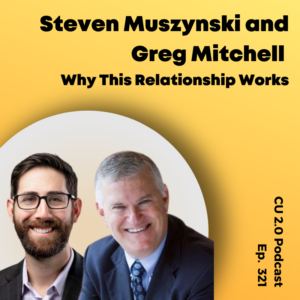It’s not exactly news to say that California is dealing with a housing crisis. For decades, housing demand in the Golden State has outpaced supply, particularly in its major cities and suburbs. Local opposition to housing growth and restrictive zoning codes have made it challenging for builders to meet housing demand – and the result has been high housing costs, rising homelessness, and an exodus to states with lower costs of living.
California knows it needs to provide more housing opportunities. In 2017 and again in 2019, the state passed laws to streamline the permitting and construction of accessory dwelling units, also known as backyard cottages, granny flats, or casitas.These ADUs have since grown in popularity—over 19,000 were permitted statewide last year—but hundreds of thousands are needed to help meet the state’s housing demand.
It turns out that building an ADU is easier in theory than it is in practice. One fintech startup, Revival Homes, is trying to streamline the process with the help of credit unions. Here’s how.
A Quick Look at Housing in California
Just Google “California housing crisis” and see what pops up. There’s a lot—and it’s all from very credible, very high-profile sources.
But the long version is more complex. A half-century-old law that was supposed to encourage more affordable housing didn’t have the intended effect. In some cases, it even encouraged NIMBYs—that is, “not in my backyard” types—to make their own obstructive zoning codes.
Cities and counties are supposed to create zoning for lower income levels. Then, they’re supposed to report on their progress. The zoning happened, but the progress and reporting didn’t go as well.
Consequently, California’s population is growing much, much faster than its available housing.
In 2017 and again in 2019, California decided to get around some of its zoning and construction issues. The state concluded that the needed additional housing could come from people’s back yards and garages. There was already a growing demand for ADUs; on top of the always present demand for home improvement was the boom of Airbnb and VRBO and homeowners looking for additional rental income.
The new laws would make it easier for people to create affordable housing options on their own properties. The state would no longer need to rely on developers to satisfy demand.
ADU Laws Aren’t a Silver Bullet
Unfortunately, streamlining ADU permitting is only half the battle. Building an ADU requires a lot of work and planning, and many busy homeowners often struggle to:
- Plan and design the unit
- Navigate permits and laws
- Find and manage contractors
- Apply for and secure funding
While some people might look at that list and say, “well, that’s just 4 things!” Anyone who’s ever been involved in a construction process knows those 4 things take a lot of time and energy…
And that’s before construction begins!
For many qualified would-be ADU owners, the process can be slow and complex enough to put brakes on their plans.
Where Revival Homes and Credit Unions Help
Revival Homes picks up where ADU legalization left off. Permitting applications for ADUs increased significantly after the laws changed as homeowners prepared to “break ground.”
Yet instead of leaving homeowners to fend for themselves after the permit, Revival Homes guides them to completion. They help at all stages by providing expert project advice, matching them to trusted design-build contractors, and connecting them to affordable project financing
The last part is where credit unions come in. There are many options for financing ADU construction loans, but not many of those options are attractive:
- Cash-out refinances are very unappealing at today’s interest rates;
- HELOCs and home equity loans require high home equity;
- Renovation loans require refinancing of the primary mortgage; and
- Construction loans may require refinancing, extra closing costs, and high rates.
Revival Homes’ approach to ADU construction lending ensures that borrowers get what they need on a reasonable timeline. No mortgage refinance, funding that accounts for the gain in home’s value with an ADU, and the ability to pre-count anticipated ADU rental income towards the borrower’s total income. All this makes Revival Homes loans available to borrowers in a broad income range.
Couple the above with the fact that Revival Homes is literally about community building, and you can see why credit unions are the best lending partners for this fintech. The housing crisis in California may be ongoing, but with credit union help, Revival Homes enables California homeowners to build and finance ADUs.
If you want to learn more about Revival Homes or how to get involved, download their overview here:
Additional Resources
Like what you’ve seen so far? Sign up for our Fintech Call Program and get a personalized, 30-minute call each quarter. We’ll discuss the latest technologies and solutions, make key introductions, and offer early access to events, giveaways, and more!
And of course, please subscribe to our blog (if you haven’t already)!




